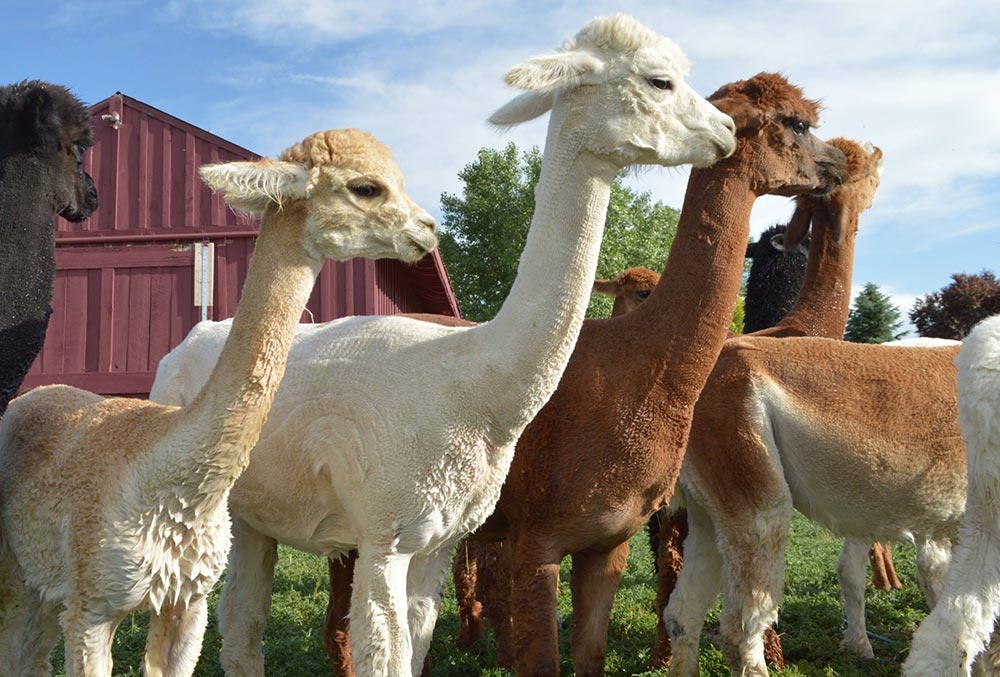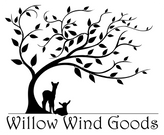Willow Wind Farm: The Journey Here
Annie Hunt, a food industry veteran of more than 35 years, spent her professional life talking about food production, sustainability and her personal hobby—growing things. Despite a successful career consulting top natural/organic brands and retail groups, she yearned to get her hands dirty and live a more self-sufficient life. She dreamed of making a career of it.
A lifelong grower—Annie started gardening potatoes at the ripe age of seven—she felt the pull of a lifestyle that would allow her to provide food for herself and her community. A desire to do no harm and if luck would have it, add a little value.

When Annie purchased her Berthoud farm, it contained only one poorly maintained barn and no proper fencing.
Annie bought a 9-acre farm in northern Colorado, a gorgeous place with good bones but in need of repair. The small barn hadn’t been used in years and there was no fencing. Pastures were weedy and bare. The familiar “farm stuff” lingered here and there and the property was ill maintained. Friends and family cautioned her about the effort required for this massive undertaking. Annie got to work.


With lots of hard work and grit, Annie transformed the Berthoud property into a thriving farm.
She finally had the space to expand her gardens and grow produce on a larger scale. Annie learned to craft soap, lotion, and hair care, some of which she sold at her farmstand and a small shop in town. With zero livestock experience and minimal knowledge, animals became a dream and a goal, and eventually Annie welcomed a tiny goat herd to produce milk for her cheese and personal care products. Fiber and fiber-producing livestock came next. By a very circuitous route, Annie ended up with six alpacas.

Annie’s transported her very first goats home in the back of her RAV4.
She searched Colorado for Mohair and Cashmere goats, coveted in the fiber industry, but couldn’t find the animals she needed. Finally, Annie managed to track down two Cashmere goats in Eastern Colorado. The woman who owned them also had six alpacas for sale. Annie brought home the goats, but they were mean as all hell, which didn’t fit her vision, tested her resolve and highlighted her inexperience. She soon returned them. Instead, she bought the alpacas, curious creatures she’d never encountered before.

Willow Wind Farm’s original herd of alpacas.
That first year, her alpacas delivered a big surprise. Unbeknownst to Annie, two of the females were bred with crias (baby alpacas) on the way. She was about to jump on a call with a new client—a webinar with close to 100 retailers—to host a training. Anxious, Annie decided to visit her alpacas to calm her nerves. She was met with an alarming sight. One of the alpacas appeared to have impaled herself on a foreign object. A frantic Annie ditched the call for a closer look and saw that it was in fact a hoof. A wobbly legged cria soon popped out but not before Annie made a panicked call to the client cancelling the training. Three weeks later on a snowy November day, the next cria came. These births were not any practiced event and in retrospect the shepherd was in no way a calming force. Nature did its thing, and all was well. And remarkably, Willow Wind Farm was blessed with its first two youngsters.

A surprise cria at Willow Wind Farm.
With the help of a phenomenal vet, Annie found herself immersed in the weird and wonderful world of alpaca husbandry and livestock care. It was an immense topic, especially for breeding operations. For the first two years, Annie brought in alpacas and a few more goats in need of a home. Unable to do so much as clip an overgrown alpaca toenail, Annie was on a mission to learn how to care for her new herd. Through her new relationships with livestock owners, the whole principle of quality and breeding was introduced and within a couple of years Annie committed herself to high quality seed stock production. This naturally led to an utter fascination with fiber production and products. Quality fiber required quality livestock, and so that journey began in earnest. Her goal was simple—to breed the best alpacas she could that qualified as ribbon winners in all the breed’s standards.
Up at 4 AM every day, Annie threw herself into the intricacies of fiber and how it responded to dye. For about a year and a half, each morning before her full-time job she washed, dried and dyed sheep and alpaca fibers from across the globe. She collected fiber, found a mill and began experimenting with yarn.
As her small herd grew, so did the scale and scope of caring for the animals, including everything from nutrition and pasture care to treating common ailments. Due to their stoic nature, simply determining whether an alpaca was in a bad way was a challenge. A nuance in behavior could indicate something afoot and by the time obvious symptoms appeared, it often meant the alpaca was quite ill. It pays to know the individual animals and Annie spent considerable time with them to identify each alpaca’s normal behavior. This task became a focal point then and remains one at Willow Wind Farm today. Each step in Annie’s journey uncovered a depth of understanding and education not obvious from the outside looking in, a realization that ranching and farming are built on millennia of careful application of resources and care.


Annie’s first show and championship wins.
Annie invested in her livestock, purchasing top animals from well-known breeders. She attended her first show with three alpacas and to her surprise (and likely to the shock of other practiced breeders), won two championships and a first place in some very competitive color categories.
Fiber began collecting year after and year and gradually, Annie started processing it in earnest, wet felting some at home and milling the best fleeces into yarn. In the last couple of years, Annie began collecting, grading, and sorting it herself for commercial processing.

The new barn under construction in Westcliffe, CO.
On April 29, 2020 Annie relocated Willow Wind Farm to 85 acres in Westcliffe, CO. It was time to scale. She purchased a partially finished home in a remote little town on 85 sprawling acres skirting the Sangre De Cristo Mountains. She had done well in the sale of her old farm and set about investing that profit into her new place. Annie built a sizeable barn. A garage. Miles of predator proof fencing and gates. And more gates. And more. It was an adventure in planning, another huge endeavor that was brand new to Annie. All this building needed to happen quickly as the herd was being boarded at another farm. Within three months, the barn and fencing were done and the herd descended. In retrospect, the whole project seemed ordained by some force that was determined for this fate to be realized.

The view from Willow Wind Farm and Annie’s modern grey Chancellor.
Eventually, Annie completed the infrastructure and increased her breeding program from 5-6 crias a year to 30-40. She focused on breeding superior animals with excellent conformation and fleece that was luxuriously soft and bright, with a strong structure.

Bomber, a very talented herdsire who still resides at Willow Wind Farm.
The white/light fiber category had long been the fiber/wool industry’s focus as its pale coloring dyed well. Never one to follow the beaten path, Annie became interested in grey alpacas, with a particular focus on developing the roan-colored modern grey. One of the least developed areas in alpaca and sheep, Annie glimpsed an opportunity to make an impact. Annie acquired a gorgeous foundation of females and bred them to some of the best grey-producing herdsires. Willow Wind Farm was well on its way.

Cupid, Annie’s modern grey herdsire.

A gorgeous light rose grey fleece produced by Willow Wind Farm
While alpacas are Willow Wind Farm’s focus, Annie always owned a few sheep, lovely and sensitive critters with their own fiber appeal. Until Annie relocated to Westcliffe, they were pets whose wool was periodically included in some of Annie’s custom yarns. In 2021, Annie made a firm commitment to adding sheep to her fiber extravaganza and introduced a foundation group of top quality registered colored merino ewes to join her existing flock: a silver Wensleydale named Hazel and a chocolate brown CVM named Buttercup. She completed the picture with two gorgeous colored rams. Spring of 2022 was Annie’s first lambing season. Willow Wind Farm currently has five colored merino ewes with a focus on “grey”, five ewe lambs, one lucky ram lamb (completely silver in color and developing into a true stud), and a handful of wethers to keep Hazel and Buttercup company.

Willow Wind Farm’s merino ewes Coal and Liberty.
Annie’s breeding program is only part of the story. Over time, she has developed two distinct processes for her wool and alpaca.
The first is a custom blended yarn made from predominantly homegrown fiber. Annie’s goal was to produce the best custom yarns made with the highest quality fiber, sorted and often washed at Willow Wind Farm in Westcliffe and shipped in small batches to a cottage mill in Ohio. The yarn is completely unique, with new color notes and combinations on offer each season. Annie sources additions like silk or yak down from other ethical producers and includes them in the blends.

Gorgeous wool shorn from Coal
The second process is a broader effort to produce high quality, commercially milled outerwear and home décor. While a good portion of Willow Wind’s fiber is included here, fiber from contributing farms in Colorado and neighboring states is collected en masse, skirted, sorted, and shipped in large bales separated by color length and grade. Thousands of pounds of these alpaca bales are shipped each season and combined with US grown merino from larger like-minded producers. End products are primarily alpaca, primarily merino or a popular alpaca merino blend. Every product is lovingly designed with top quality fibers sourced from ethical producers who put their animals first. This dedication to quality, transparency and tradition is at the heart of Willow Wind Farm.
Willow Wind Farm’s journey has begun in earnest, with gorgeous results. Follow along as the farming and ranching continues and look forward to new products every season!
Enjoy!
